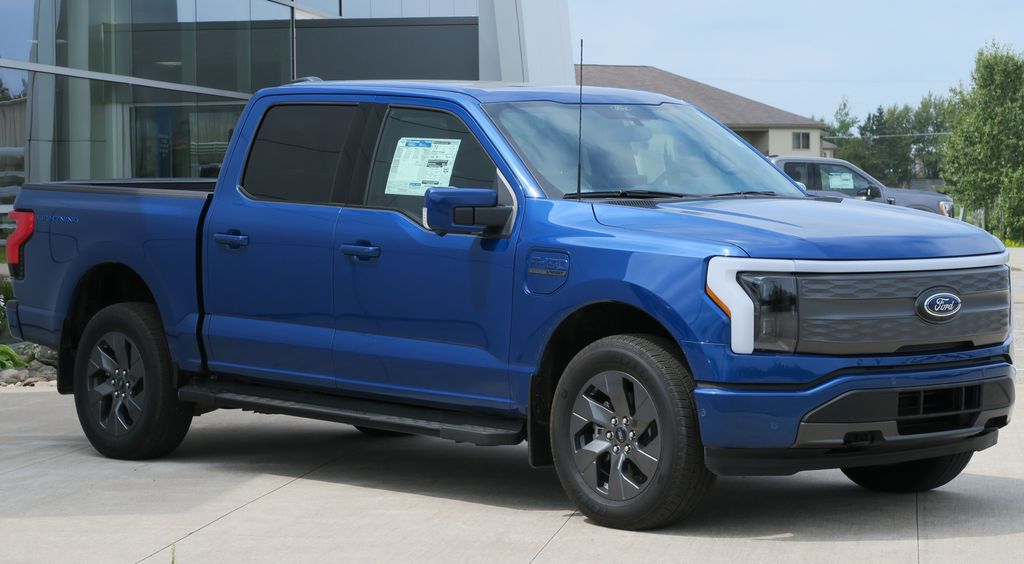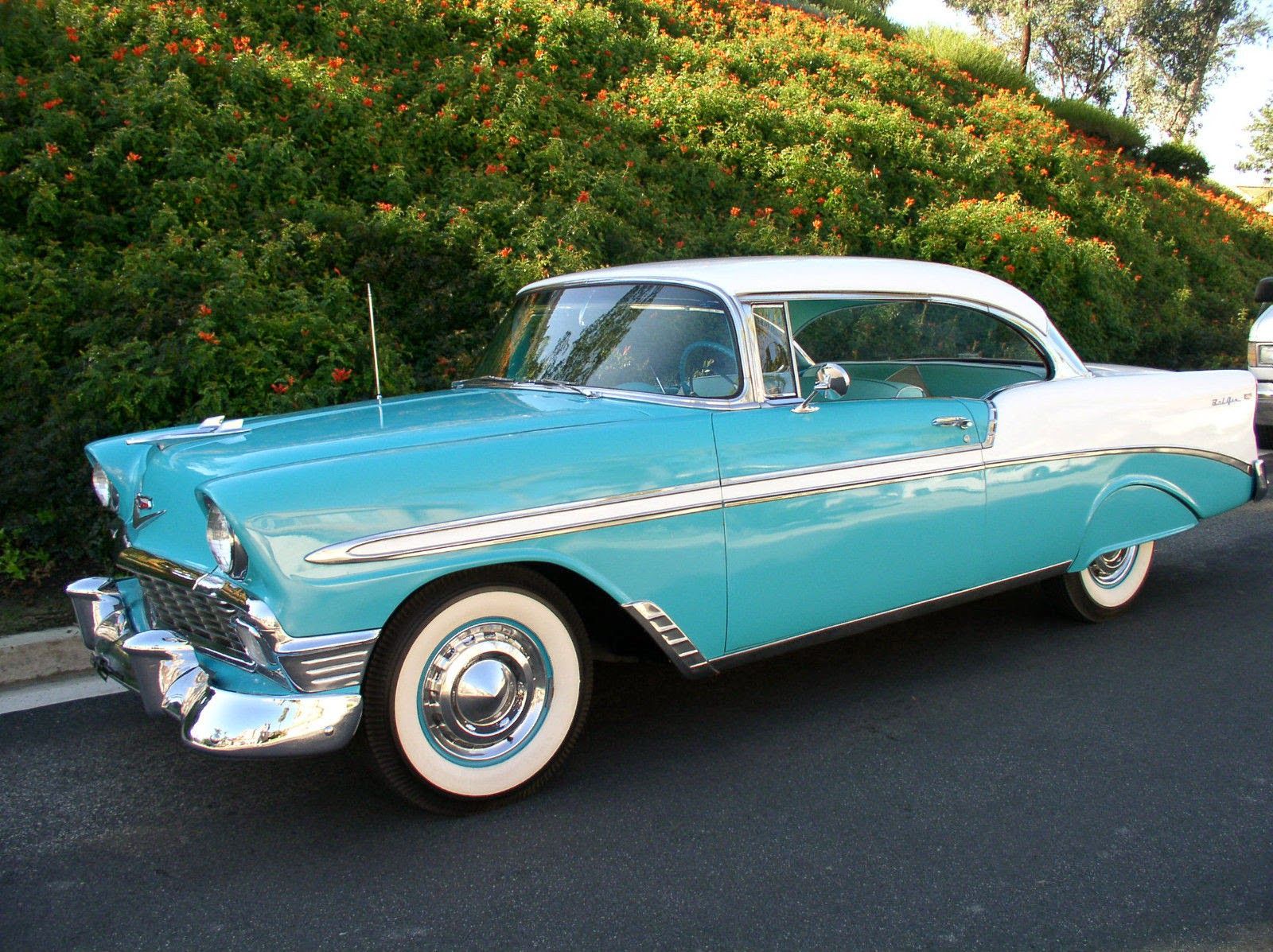
The allure of a classic car is undeniable. There’s a distinct charm in owning a piece of automotive history, a vehicle that tells a story and turns heads wherever it goes. For many enthusiasts, the dream of cruising in a vintage ride is tempered by a common concern: the fear of astronomical maintenance costs and constant mechanical headaches. It’s a valid worry, as older cars are inherently less reliable than their modern counterparts, with components more prone to wear and tear, and parts availability often a significant challenge.
However, the landscape of classic car ownership is not entirely defined by these daunting prospects. Consumer tastes are evolving, and what was once simply a used car has often transitioned into a highly sought-after collectible. Importantly, within this expanding market, there exists a unique category of classics that defy the stereotype of being money pits. These are the unsung heroes—vehicles built with durability and simplicity in mind, offering a surprisingly low-maintenance experience that allows owners to truly enjoy the drive, rather than constantly anticipate the next repair bill.
This article focuses on those exceptional models that strike a perfect balance: they are affordable to acquire, robust enough for regular enjoyment, and straightforward to maintain without the need to hunt down obscure parts or navigate complex electronics. They represent a refreshing approach to classic car ownership, transforming a potential passion project into a genuinely enjoyable experience. Join us as we explore the first half of our curated list of fourteen low-maintenance classic cars that truly deserve more attention, proving that the classic car dream can indeed be a practical reality.
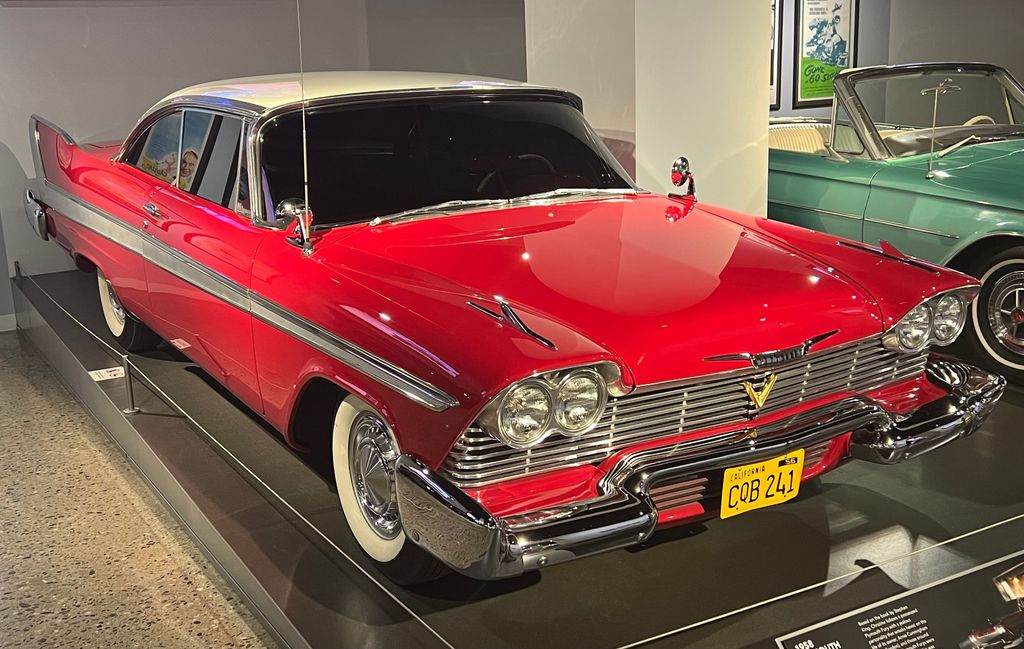
1. **Plymouth Fury**Does the Plymouth Fury truly receive the recognition it deserves as a fun-to-drive and easy-to-maintain muscle car? Regrettably, the answer is often no, which is a considerable oversight given its iconic status during its heyday. This American classic wasn’t just another powerful machine; it offered a blend of performance and practicality that was rare even in its own era.
One of the Fury’s standout features was the availability of the optional Hemi V8 engine, a powerplant that famously cemented Chrysler’s reputation for high-performance engineering. This engine, combined with the Fury’s inherently lightweight driving characteristics, provided an agile and responsive feel that many contemporary sports cars struggled to match. It was a true driver’s car, delivering excitement without excessive complexity.
The Fury enjoyed a considerable production run, establishing itself as a popular choice before its eventual discontinuation. This longevity speaks volumes about its enduring appeal and robust design. The timeless aesthetic of the car, coupled with its straightforward mechanicals, made it an excellent option for anyone seeking an engaging driving experience that didn’t demand constant attention.
Indeed, during the peak of the muscle car era, the concept of a car that was both thrilling to drive and relatively simple to maintain was a core component of the movement. The Plymouth Fury embodied this ethos, making it a stellar, yet often overlooked, example of classic American automotive ingenuity that offers a rewarding ownership experience without undue financial burden.
Car Model Information: 1966 Plymouth Fury
Name: Plymouth Fury
Caption: 1959 Plymouth Sport Fury
Manufacturer: Plymouth (automobile)
Aka: Plymouth Sport Fury (1959, 1962–1971),Plymouth VIP (1966–1969)
Production: 1958–1978
ModelYears: 1959–1978
Assembly: bulleted list
Class: Full-size,Mid-size,Full-size,Mid-size,Full-size,Mid-size
Layout: FR layout
Predecessor: Plymouth Belvedere,Plymouth Plaza,Plymouth Savoy
Successor: Plymouth Gran Fury,Plymouth Gran Fury
Sp: us
Categories: 1960s cars, 1970s cars, All articles needing additional references, Articles needing additional references from December 2018, Articles with short description
Summary: The Plymouth Fury is a model of automobile that was produced by Plymouth from 1955 until 1989. It was introduced for the 1956 model year as a sub-series of the Plymouth Belvedere, becoming a separate series one level above the contemporary Belvedere for 1959. The Fury was a full-size car from 1959 until 1961, then a mid-size car from 1962 until 1964, again, a full-size car from 1965 through 1974, and again, a mid-size car from 1975 through 1978. From 1975 until 1977, the Fury was sold alongside the full-size Plymouth Gran Fury. In 1978, the B-body Fury was the largest Plymouth, and by 1979, there was no large Plymouth. This product gap was filled in 1980 with the R-body Gran Fury, followed by the M-body Fury in 1982. Production of the last V8, RWD Plymouth Fury ended at the Kenosha Main assembly plant in Kenosha, WI, on December 23, 1988. Unlike its sibling brand, Dodge, Plymouth would not live to see the resurgence of the large, V8/RWD sedan.
Get more information about: Plymouth Fury
Buying a high-performing used car >>>
Brand: Plymouth Model: Fury
Price: $34,649 Mileage: 57,324 mi.
Read more about: Under the Hood: Unmasking 7 Overrated American Cars and Celebrating 7 Overlooked Gems That Deserve Your Attention
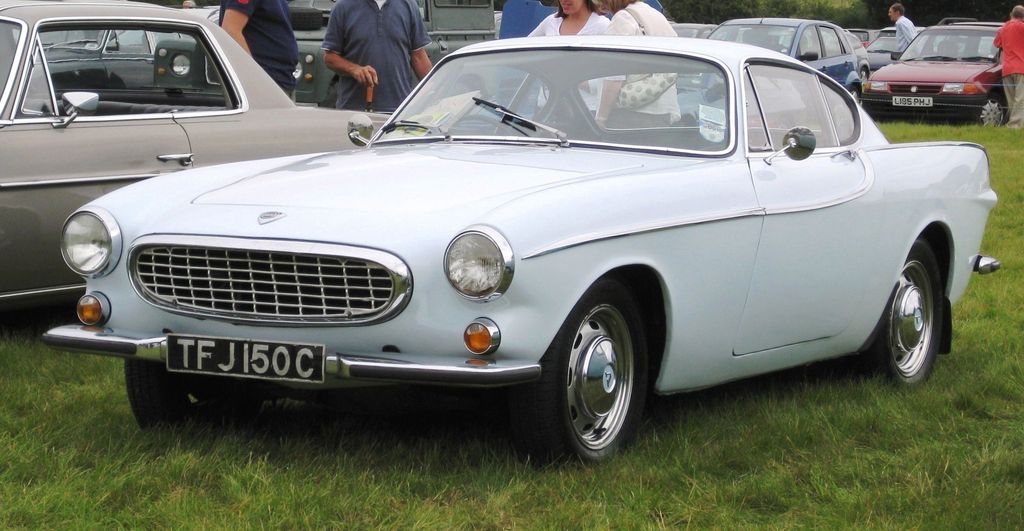
2. **Volvo P1800**Volvo, as a brand, has long been synonymous with safety and uncompromising reliability, and perhaps no single car in its storied history better encapsulates the latter virtue than the remarkable P1800. This stylish coupe isn’t just a pretty face; it’s a testament to engineering longevity and steadfast performance, making it a true classic that demands minimal fuss.
The legendary P1800 driven by Irv Gordon made history, securing its place as the highest confirmed mileage vehicle ever recorded. By the time Gordon passed away in 2017, his car had astonishingly accumulated over 3.2 million miles. This incredible feat was achieved with only a handful of major repairs throughout its lifetime, including just two engine rebuilds and some bodywork after a transporter incident.
While most P1800s you encounter on the classic car market will have racked up only a tiny fraction of Gordon’s monumental mileage, the underlying durability remains. As long as these vehicles are found in good overall condition, they are expected to offer a similarly reliable experience. Prospective owners should, however, be particularly vigilant about signs of internal rust and any missing service records, as these can be indicators of less diligent care.
Despite these standard classic car considerations, few vehicles of its vintage manage to present such an impressive and harmonious blend of daily drivability, unwavering reliability, and genuinely head-turning style. The Volvo P1800 stands as a sophisticated choice for the enthusiast who values both elegance and dependable performance, ensuring that classic car ownership remains a pleasure, not a chore.
Read more about: Golden Years, Chrome Dreams: Unlocking the Hobby and Investment Potential of Classic Cars for Retirees
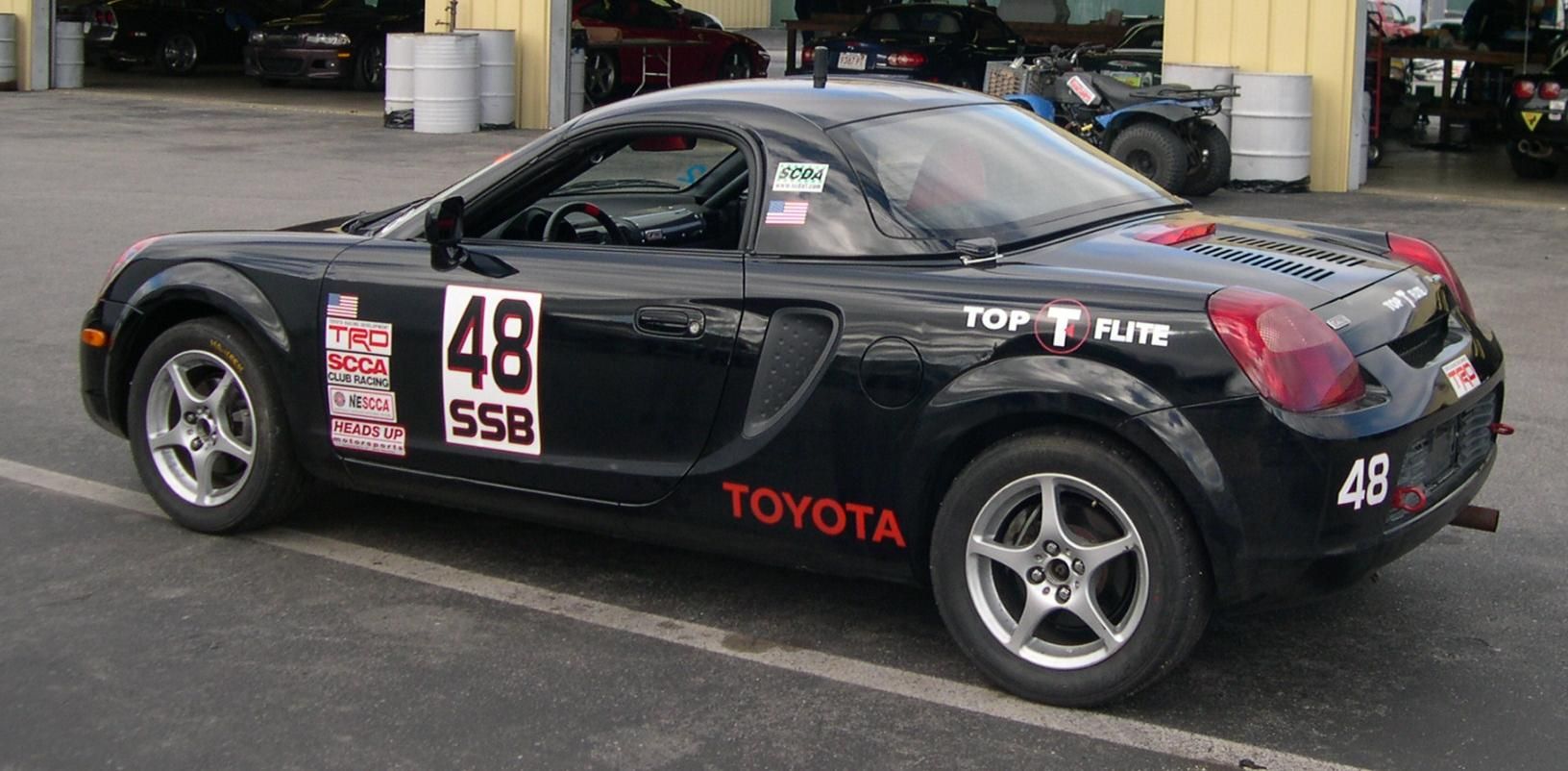
3. **Toyota MR2**When we speak of iconic Japanese Domestic Market (JDM) cars, models like the MkIV Toyota Supra often come to mind, celebrated for their exceptional over-engineering. However, many of Toyota’s lesser-appreciated models were also constructed with a durability that often exceeded what was strictly necessary, a hallmark of the brand’s commitment to quality. The first-generation Toyota MR2 serves as a prime example of this philosophy in action.
This compact, mid-engined sports car boasts very few reliability gremlins, earning a robust reputation for toughness despite its relatively small footprint. Its status as one of the very few mass-produced mid-engined cars makes it a rarity and a fascinating piece of automotive history. The MR2’s uniqueness wasn’t merely a gimmick; its mid-engine layout contributed directly to its exceptional responsiveness and impressive performance, especially considering its relatively unremarkable power output.
Beyond its dynamic capabilities, the car’s interior design offered a slightly more accommodating space compared to other compact JDM classics, such as the Mk1 Miata. While taller or larger drivers might still find it a snug fit for extended journeys, the thoughtful packaging enhances its practicality. Crucially, the MR2’s mechanical components are renowned for their low maintenance requirements and inherent reliability, making it a joy to own.
However, like many classics, the biggest threat to the longevity of early MR2s is rust. Prospective buyers should meticulously inspect for any significant presence of corrosion, as even the most mechanically sound classic sports car will present challenges if the bodywork is compromised. With evidence of regular maintenance and a rust-free chassis, the first-generation Toyota MR2 offers an exhilarating and surprisingly straightforward classic ownership experience.
Car Model Information: 2003 Toyota MR2 Spyder
Name: Toyota MR2
Caption: Second generation MR2
Manufacturer: Central Motors
Aka: Toyota MR (France and Belgium)
Production: 1984–2007
Assembly: Sagamihara, Kanagawa
Class: Sports car
Layout: Rear mid-engine, rear-wheel-drive layout
ModelYears: 1985–2007
Categories: 1990s cars, 2000s cars, All Wikipedia articles written in American English, All articles containing potentially dated statements, All articles needing additional references
Summary: The Toyota MR2 is a line of two-seater, mid-engined, rear-wheel-drive sports cars, manufactured in Japan and marketed globally by Toyota from 1984 until 2007 over three generations: W10 (1984–1989), W20 (1989–1999) and W30 (1999–2007). It is Japan’s first rear mid-engined production car.
Conceived as a small, economical and sporty car, the MR2 features a straight-four engine, transversely mounted in front of the rear axle, four-wheel disc brakes, and fully independent coilover suspension – MacPherson struts on each wheel.
The name MR2 stands for either “mid-ship run-about 2-seater” or “mid-engine, rear-wheel-drive, 2-seater”. In French-speaking markets, the vehicle was renamed Toyota MR because the abbreviation “MR2” sounds like the profanity “merdeux” when spoken in French.
Get more information about: Toyota MR2
Buying a high-performing used car >>>
Brand: Toyota Model: MR2
Price: $22,999 Mileage: 6,309 mi.
Read more about: Unearthing the Automotive Ghosts: 14 Forgotten Two-Seater Sports Cars That Demand Your Attention

4. **Lexus LS400**The phrases “low maintenance” and “luxury cars” rarely appear in the same sentence, let alone describe the same vehicle. Yet, the Lexus LS400 stands as a remarkable, even singular, exception to this rule. This groundbreaking sedan redefines what a classic luxury car can be, offering opulence without the typical associated headaches of vintage prestige vehicles.
At the heart of the LS400’s incredible reliability is what is arguably the most dependable Toyota engine ever produced—a robust V8. This powerhouse is famously capable of racking up hundreds of thousands of miles on the road without necessitating major repairs, a testament to its exceptional engineering. This wasn’t a fluke; Toyota reportedly poured immense resources into its development, testing 973 different prototypes before finalizing the engine’s design.
The result was an engine that delivered an unparalleled level of smoothness, easily rivaling anything its German luxury competitors could offer at the time, while retaining the legendary Japanese reliability for which Toyota was already known. But the meticulous over-engineering didn’t stop with the engine. Every facet of the LS400 was conceived from the ground up to not only surpass its European rivals in sophistication when new but also to far outlast them in terms of enduring quality and reliability.
This makes the Lexus LS400 an outstanding candidate for a classic daily driver. It should remain largely hassle-free to own, even as it accumulates higher mileages and even when it’s not in the most pristine condition. As famously demonstrated by Matt Farah’s million-mile LS400, even examples that might appear outwardly shabby can still possess a wealth of life left, provided they receive the appropriate care and attention. It’s luxury, redefined for the long haul.
Read more about: Buyer Beware: 9 Luxury Sedans That Start Falling Apart After 70000 Miles
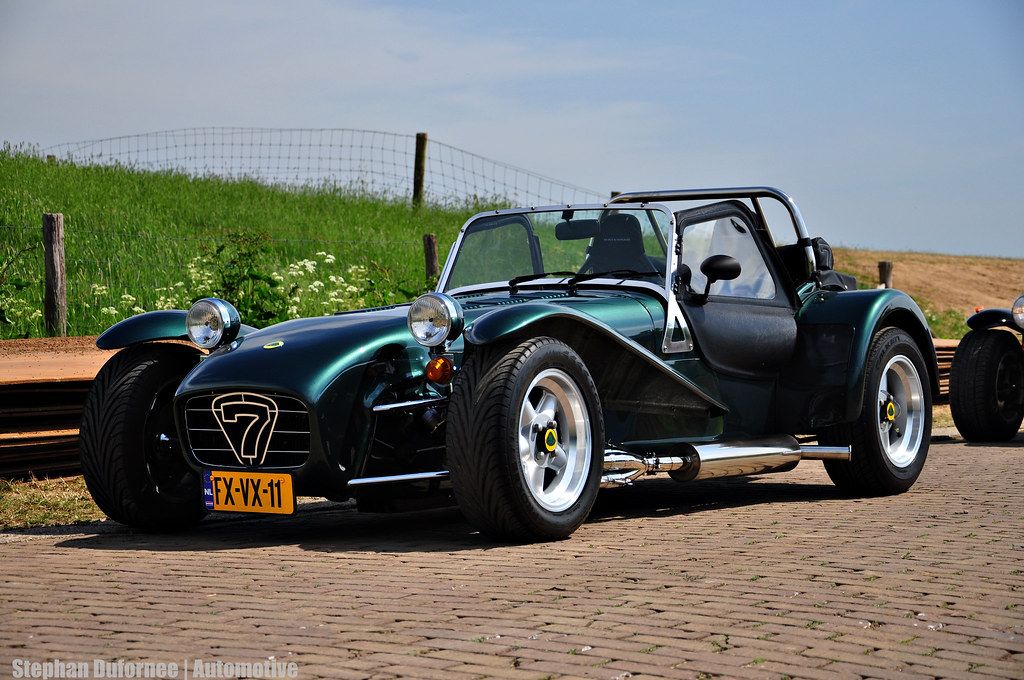
5. **Caterham Seven**For those who prioritize an unadulterated driving experience above all else, the Caterham Seven presents a compelling, albeit unconventional, classic choice. While it is undoubtedly one of the least practical cars on the road, its distinctiveness in driving dynamics is unparalleled. This is a machine built for engagement, and surprisingly, for straightforward maintenance.
As a kit car by heritage, the Caterham Seven’s design inherently facilitates easy disassembly and replacement of components. This modular approach means that should any part need attention, the process is typically less daunting than with more integrated vehicle designs. More importantly, its simple and elegant construction translates to major repair work being an infrequent occurrence, a rare blessing in the classic sports car world.
The Seven has an impressive lineage, having been in continuous production since the 1970s, and before that, it was sold under the revered Lotus brand for another two decades. Throughout this long history, the car’s fundamental design has remained remarkably consistent, a testament to its original brilliance. While the basic structure persists, several more modern powertrain components have been integrated over the years, varying by age and specification.
These engines—ranging from Ford and Suzuki units to Rover engines—are notably free from widespread reliability issues. The Seven is explicitly designed to be worked on at home by individuals possessing relevant technical skills. Given that specialist assistance might be hours away, it is best suited for an owner willing to undertake service and repair tasks themselves. This DIY ethos, combined with its inherent reliability, makes the Caterham Seven a truly unique and surprisingly hassle-free weekend toy, a refreshing anomaly among British classics.
Read more about: Revived Legends: Unpacking the Surprising Comebacks of Iconic Automotive Stars

6. **Honda CRX**The Honda CRX was conceived and launched as the enthusiast-oriented offering within the broader Civic lineup, and it delivered on that promise with aplomb. It ingeniously combined sportier handling characteristics with a choice of remarkably frugal engines, creating a package that was both exhilarating and economical. This duality quickly captured the imagination of a generation of drivers.
The CRX had already established its presence in the market before the introduction of the CRX Si variant, which truly captured the attention of American buyers, carving out a segment of its own in the U.S. market. The first generation, produced from 1984 to 1987, was followed by the second generation, introduced in 1988 and continuing until 1991, when dwindling sales led to its discontinuation.
Both generations faithfully offered the same thrilling backroad dynamics on a budget, though it’s worth noting that prices for the more desirable variants, such as the Si, can now be considerably steeper. The CRX earned a solid reputation for being exceptionally well-built, with most of its known weak spots proving fairly straightforward to diagnose and remedy, a boon for long-term ownership.
As with any classic, the most low-maintenance examples will undoubtedly be those that have been diligently cared for, particularly concerning the engine. Certain replacement engine components are now not as readily available as they once were, emphasizing the importance of a well-maintained original. While the CRX’s plastic body panels are a potential weak spot, prone to cracking, and unwanted modifications can compromise reliability, for a car of its age, the CRX remains generally hassle-free to own and is becoming an increasingly valuable collectible.
Read more about: Unearthing the Automotive Ghosts: 14 Forgotten Two-Seater Sports Cars That Demand Your Attention
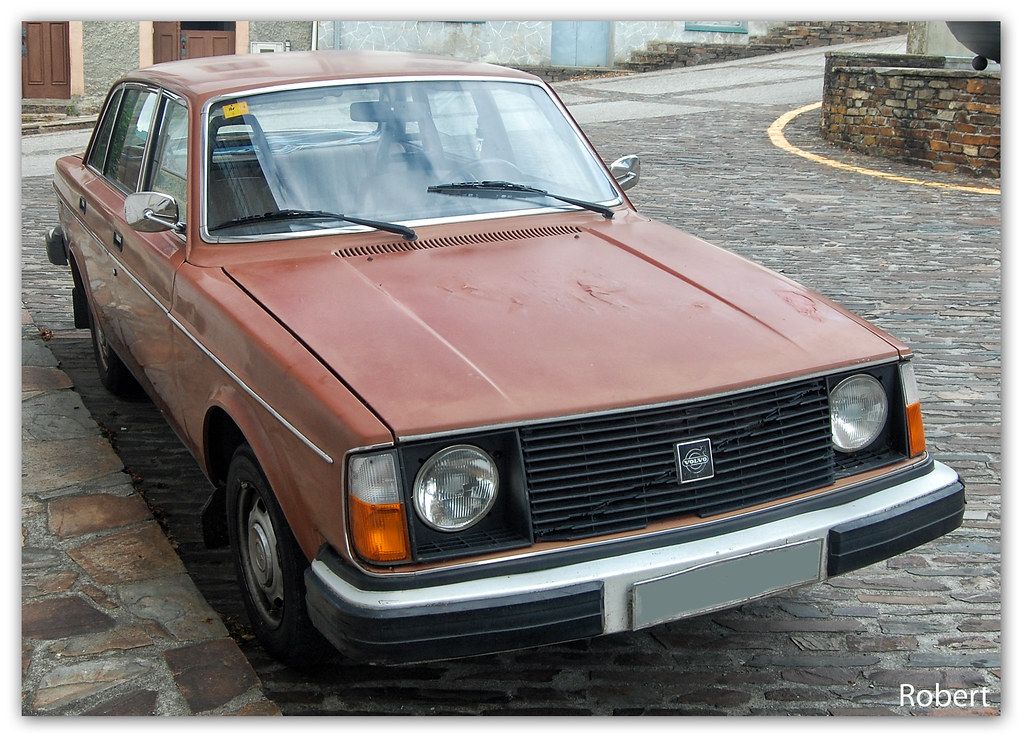
7. **Volvo 240**Instantly recognizable for its distinctive, boxy silhouette, the Volvo 240 is a Swedish classic that may not appeal to every aesthetic taste, but its utilitarian design belies a truly hard-earned and legendary reputation for toughness. This is a car built to endure, and its widespread availability on the used market makes finding a clean example a significantly less arduous task than with many rarer classics.
One of the greatest advantages of Volvo 240 ownership is the straightforward nature of repairs when issues do inevitably arise. Its design prioritizes accessibility and mechanical simplicity, making it a favorite among DIY enthusiasts and minimizing labor costs at repair shops. However, like nearly any car of its age, rust remains one of the most common and potentially crippling issues with older 240s, highlighting the importance of thorough pre-purchase inspection.
Wiring issues are also occasionally cited by owners as a common failure point. Nevertheless, many older, meticulously maintained examples of the 240 will have already had these historic wiring concerns addressed, further solidifying their long-term reliability. The 240 was engineered from the outset to withstand the punishing conditions of the Swedish winter, explicitly designed as a high-mileage vehicle, with its six-figure odometer being a promise, not just a display.
With the correct and consistent maintenance, the robust old Volvo engines tend to be nothing short of bulletproof, requiring little more than regular servicing to keep them running smoothly, even after several decades of demanding use. It’s important to note, however, that the car’s almost indestructible reputation has sometimes led owners to skimp on maintenance; consequently, not every example on the used market today will be quite as reliable as the average collector car, making careful selection paramount. Even so, pristine examples remain reasonably priced, ensuring this enduring workhorse stays within reach of most enthusiasts looking for a reliable and practical classic.
Our journey through the world of dependable classics continues, proving that the dream of owning a vintage ride doesn’t have to be a financial nightmare. As we move further into this curated selection, we’ll spotlight seven more overlooked workhorses and unique machines that combine timeless design with hassle-free ownership, reinforcing the idea that automotive history can indeed be a practical and enjoyable reality for enthusiasts.
These vehicles stand as testaments to thoughtful engineering and robust construction, offering reliability and an engaging driving experience without the constant worry of extensive repairs or hard-to-find parts. They embody the spirit of approachable classic car ownership, where the joy of the road takes precedence over the burden of the garage. Join us as we unveil the remaining hidden gems on our list, each offering its own blend of heritage, performance, and surprising ease of maintenance.
Car Model Information: 1993 Volvo 240 Base 4dr Sedan
Name: Volvo 200 Series
Caption: 1989 Volvo 240 GL station wagon
Manufacturer: Volvo Cars
Production: 1974–1993,2,862,573 produced
ModelYears: 1975–1993
Assembly: ubl
Predecessor: Volvo 140 Series,Volvo 164
Successor: Volvo 850,Volvo 760
Class: Mid-size car
BodyStyle: Sedan (automobile),station wagon
Layout: Front-engine, rear-wheel-drive
Platform: Volvo P platform
Related: Volvo 262C
Engine: collapsible list
Title: Petrol and diesel engines
Transmission: 4-speed manual,4-speed manual with overdrive,5-speed manual,3-speed automatic,4-speed automatic
Wheelbase: 104.3 in
Abbr: on
Length: convert
Width: convert
Height: convert
Designer: Jan Wilsgaard
Categories: 1980s cars, 1990s cars, All articles needing additional references, All articles with incomplete citations, All articles with unsourced statements
Summary: The Volvo 200 Series (designated internally as the 240 and 260 models) was a range of mid-size cars manufactured by Swedish automaker Volvo Cars from 1974 to 1993. Designed by Jan Wilsgaard, the series was developed from the Volvo 140 Series and incorporated safety innovations from Volvo’s VESC experimental safety vehicle program.
The 200 Series was produced in sedan, station wagon, and limited convertible body styles. Over 2.8 million units were manufactured during its 19-year production run, making it one of Volvo’s most successful model lines. The series established Volvo’s reputation for safety and durability, with many examples remaining in service decades after production ended.
Production overlapped with the introduction of the Volvo 700 Series in 1982. While the 260 Series was discontinued in 1984 and replaced by the 700 Series, the popular 240 model continued production until 1993. The final 240 was manufactured on 14 May 1993, concluding nearly two decades of production.
Get more information about: Volvo 200 Series
Buying a high-performing used car >>>
Brand: Volvo Model: 240
Price: $6,988 Mileage: 136,517 mi.
Read more about: Unmasking the Hype: 14 Overrated Trucks & SUVs That Fall Short for Tough Jobs, According to Engineers and Towing Tests
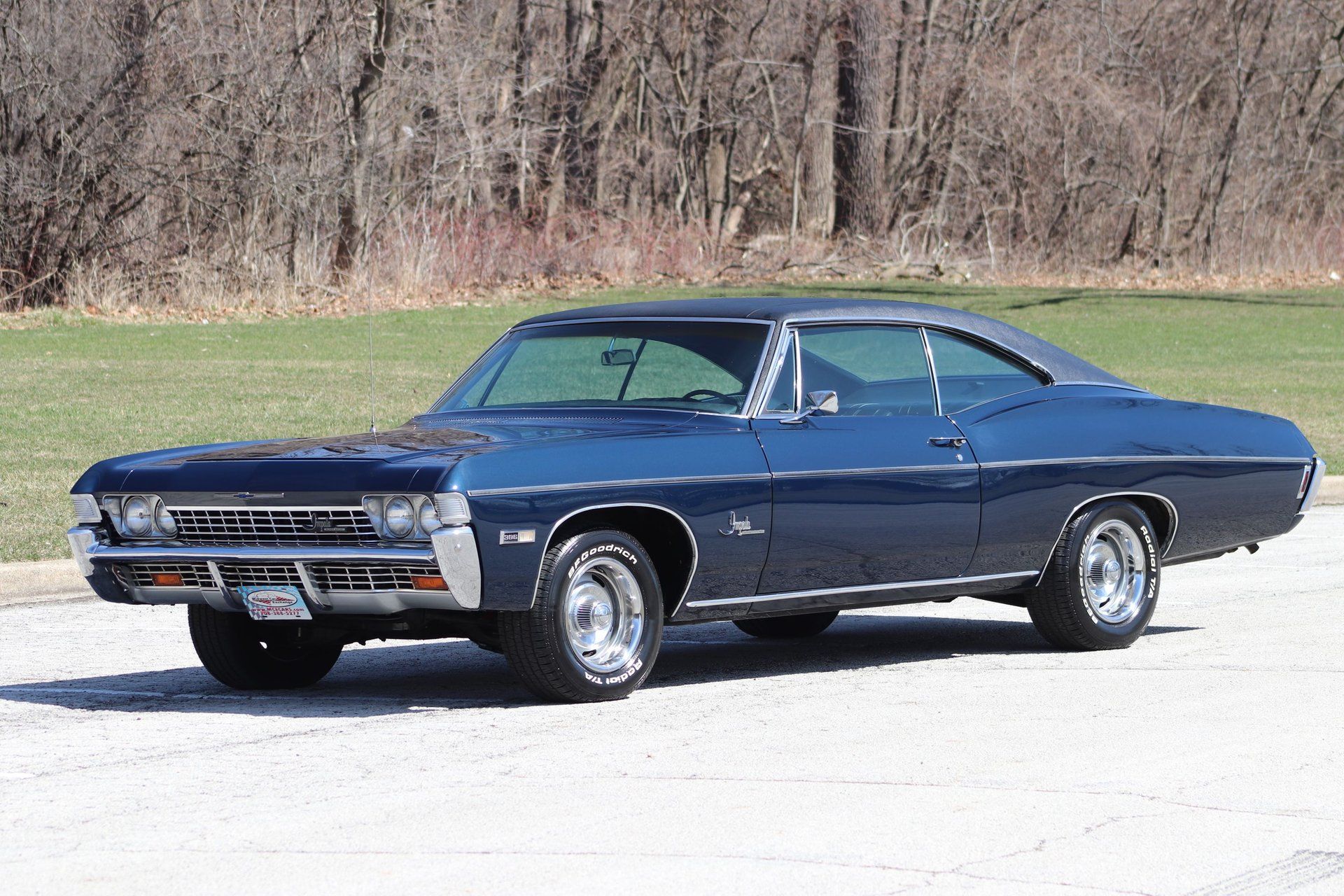
8. **Chevrolet Impala SS**Originally conceived to invigorate the sales of GM’s B-Body platform, the Chevrolet Impala SS has gracefully matured into a modern classic. What makes it particularly appealing to enthusiasts is its dual nature: it remains both an affordable acquisition and a surprisingly easy car to maintain in the used market, a rare combination for a vehicle with such a strong presence.
Underneath its assertive exterior, the Impala SS houses an LT1 V8 engine, a powerplant also featured in various other GM models of the era. This shared componentry is a significant advantage, making parts relatively straightforward to locate if a repair becomes necessary. Impressively, many owners report these engines can accrue several hundred thousand miles without requiring major repairs, speaking volumes about their inherent durability.
However, like many cars of its vintage, there are a couple of specific points to consider. The Opti-spark distributor is a known weak spot that potential owners should be aware of. Rust can also be a costly issue, although its severity largely depends on the geographic location where the car has spent most of its life, with drier climates naturally being more forgiving.
For those aiming to minimize maintenance and repair costs, lower mileage examples of the Impala SS are generally preferable, as many higher mileage survivors may have endured a tougher life. Yet, even those examples that might appear a bit ‘janky’ can often be restored into reliable runners without breaking the bank, especially for owners with the skills to undertake some of the tinkering themselves, making it a rewarding project.
Car Model Information: 2019 Mazda CX-5 Grand Touring Reserve
Name: Chevrolet Impala
Caption: Fourth generation model (1967)
Manufacturer: Chevrolet
Production: 1957–1985,1994–1996,1999–2020
ModelYears: 1958–1985,1994–1996,2000–2020
Predecessor: Chevrolet Bel Air,Chevrolet Lumina#Second generation (1995–2001)
Successor: Chevrolet SS,Chevrolet Caprice
Platform: GM B platform,GM W platform,GM W platform (GMX211) (2005–2013),GM Epsilon platform#Epsilon II
Class: Full-size car,Mid-size car
Layout: Front-engine, rear-wheel-drive layout,Front-engine, front-wheel-drive layout
Categories: 1960s cars, 1970s cars, 1980s cars, 1990s cars, 2000s cars
Summary: The Chevrolet Impala () is a full-size car that was built by Chevrolet for model years 1958 to 1985, 1994 to 1996, and 2000 to 2020. The Impala was Chevrolet’s popular flagship passenger car and was among the better-selling American-made automobiles in the United States.
For its debut in 1958, the Impala was distinguished from other models by its symmetrical triple taillights. The Chevrolet Caprice was introduced as a top-line Impala Sport Sedan for model year 1965, later becoming a separate series positioned above the Impala in 1966, which, in turn, remained above the Chevrolet Bel Air and the Chevrolet Biscayne. The Impala continued as Chevrolet’s most popular full-sized model through the mid-1980s. Between 1994 and 1996, the Impala was revised as a 5.7-liter V8–powered version of the Chevrolet Caprice Classic sedan.
In 2000, the Impala was reintroduced again as a mainstream front-wheel drive car. In February 2014, the 2014 Impala ranked No. 1 among Affordable Large Cars in U.S. News & World Report’s rankings. When the 10th generation of the Impala was introduced for the 2014 model year, the 9th generation was rebadged as the Impala Limited and sold only to fleet customers through 2016. During that time, both versions were sold in the United States and Canada. The 10th-generation Impala was also sold in the Middle East and South Korea.
Get more information about: Chevrolet Impala
Buying a high-performing used car >>>
Brand: Chevrolet Model: Impala SS
Price: $20,961 Mileage: 52,000 mi.
Read more about: Buyer Beware: These 12 Popular Cars Become Costly Money Pits Once They Hit 100,000 Miles
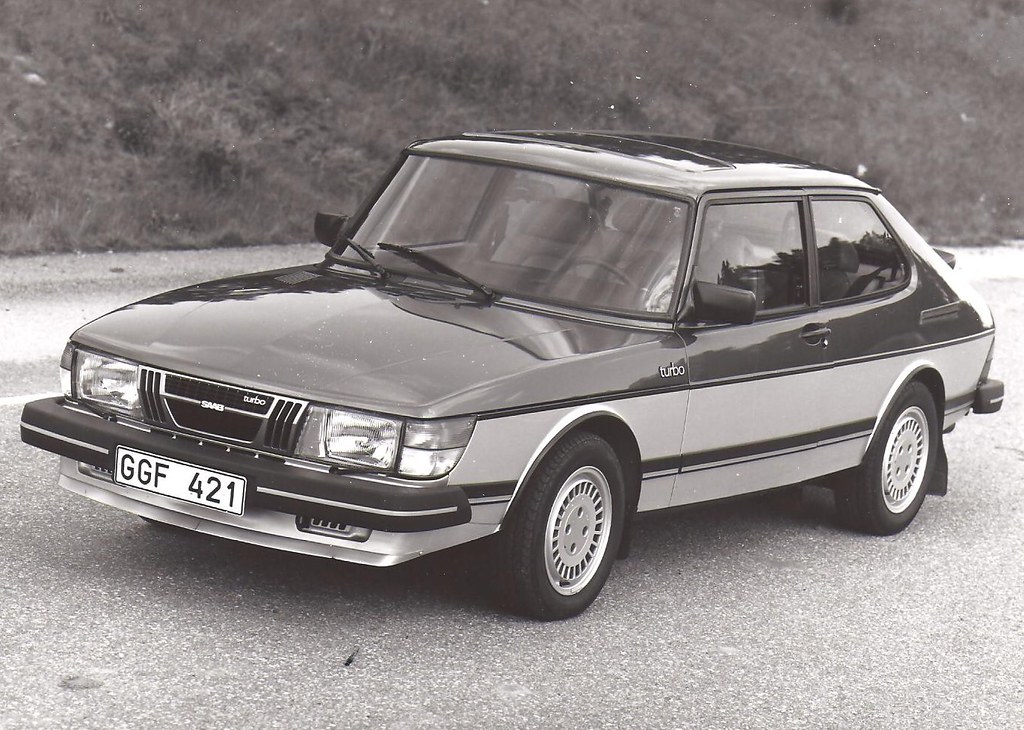
9. **Saab 900**Even though the distinctive Swedish manufacturer, Saab, has been out of production for over a decade, its aeronautical-influenced cars continue to command a devoted fanbase. Among these, the Saab 900 stands out as one of the most popular enthusiast models, celebrated for its extensive production run and a well-earned reputation for reliability that endures to this day.
The car’s unique and often quirky design aesthetic remains a head-turner, even more than 40 years after its initial introduction. Both hardtop and convertible versions were offered throughout its long lifespan, providing options for different tastes while retaining that unmistakable Saab character. Its distinctiveness on the road is matched by its surprising longevity.
Much like the Volvo 240, the Saab 900 was renowned for its durability during its time on sale. This robust nature, however, sometimes led owners to be less diligent with maintenance than a meticulous collector might be. Nevertheless, its common weak spots are generally well-documented and typically fixable without excessive trouble, making ownership manageable.
Potential concerns include sagging headliners, and later turbo models might experience issues with the Automatic Boost Control system. Additionally, the manual transmission may not always match the engine’s impressive lifespan. Despite these considerations, a well-maintained, clean Saab 900 offers an unusual classic car experience that remains remarkably hassle-free, commanding attention wherever it goes.
Car Model Information: 1992 Saab 900 Turbo 2dr Convertible
Name: Saab 900
Caption: Saab 900 SE Turbo 3-door
Manufacturer: Saab-Scania,Saab Automobile
Production: 1978–1998
Assembly: Sweden:,Trollhättan,Arlöv,Malmö,Uusikaupunki
Class: Compact executive car
Layout: Front-engine, front-wheel-drive layout
Predecessor: Saab 99
Successor: Saab 9-3
Categories: 1980s cars, 1990s cars, All Wikipedia articles needing clarification, All articles needing additional references, All articles that may contain original research
Summary: The Saab 900 is a mid-sized automobile produced by Swedish manufacturer Saab from 1978 until 1998 in two generations: the first from 1978 to 1994, and the second from 1994 to 1998.
The first-generation car was based on the Saab 99 chassis, though with a longer front end to meet U.S. frontal crash regulations and to make room for the turbo-charged engines, air conditioning and other equipment that was not available in the early days of the 99 model. The 900 was produced in 2- and 4-door sedan, and 3- and 5-door hatchback configurations and, from 1986, as a cabriolet (convertible) model. There were single- and twin-Zenith carburettor; fuel injected, and turbocharged engines, including Full Pressure Turbo (FPT) and, in European models during the early 1990s, Low Pressure Turbos (LPT).
Get more information about: Saab 900
Buying a high-performing used car >>>
Brand: Saab Model: 900
Price: $9,995 Mileage: 173,027 mi.
Read more about: Automotive Icons Unraveled: The Definitive Account of 15 Star Brands and Models That Fell From Grace

10. **Checker Marathon**Checker is predominantly recognized for its iconic role as a taxi manufacturer, with its distinctive cabs being a familiar sight in U.S. cities throughout the latter half of the 20th century. However, the company also offered vehicles to individual buyers under the Marathon nameplate, and these cars mirrored their commercial counterparts in their fundamental design philosophy: simplicity, toughness, and reliability above all else.
While they might have been considered primitive for their era and never sold in vast numbers, the Marathons that survive on the road today offer a truly unique, old-school charm. Crucially, they have lost none of their original toughness over the decades, continuing to be robust and dependable vehicles, a quality highly valued in classic ownership.
Acquiring parts for a Checker Marathon can be a bit more challenging when issues arise, given their lower production numbers. However, if you manage to find a clean, well-preserved example, it’s unlikely that extensive repairs will be needed frequently. Furthermore, Checkers share some interchangeable parts with certain other cars of the same vintage, including items like the front and rear bumpers, which can ease the burden of sourcing.
Reports suggest that earlier models are generally the toughest, with cars from the 1970s experiencing a slight decline in quality. Yet, the inherently simple nature of the Marathon means there’s not a huge amount of complex components that can go wrong, provided the car has been properly maintained throughout its life. It stands as a unique and surprisingly low-stress classic for the discerning enthusiast.

11. **Honda Del Sol**As the successor to the celebrated Honda CRX, the Del Sol unfortunately found itself somewhat overshadowed by the immense success of the Mazda Miata and didn’t quite achieve the same level of adoration from purists as its predecessor. Despite this, the Del Sol offers a wealth of appealing qualities, not least its impressively reasonable running costs, making it an attractive classic option.
Much like the CRX, the Del Sol was introduced as the sporty offering within the broader Civic range. A key advantage of this shared lineage is that it utilized more parts from a standard Civic than the earlier CRX, which translates to easier parts sourcing in today’s classic market. While there are a few parts specific to the Del Sol that can be trickier to find, the commonality is largely beneficial.
The Del Sol distinguished itself as a gentler sports car compared to the more focused Miata. This characteristic, however, makes it a more forgiving and practical daily driver, perfectly suited for those who appreciate spirited driving without sacrificing comfort or everyday usability. Its approachable nature is a significant draw for many.
Given that most surviving examples have likely served many years as daily drivers under previous owners, diligent attention to the car’s maintenance history is paramount for securing a hassle-free example. Nevertheless, discovering a well-cared-for Del Sol promises many thousands of miles of enjoyable, low-maintenance driving, cementing its place as an accessible and rewarding collectible.
Car Model Information: 2019 Mazda CX-5 Grand Touring Reserve
Name: Honda CR-X del Sol
Caption: 1994 Honda Civic del Sol Si
Manufacturer: Honda
Aka: Honda Civic del Sol,Honda del Sol,Honda CRX
Production: 1992–1998
ModelYears: 1993–1998
Assembly: Suzuka, Mie
Class: Sport compact
BodyStyle: Roadster (automobile)
Layout: Front-engine, front-wheel-drive layout
Chassis: EG1, EG2, EH6
Related: Honda Civic (fifth generation),Honda Integra#3
Engine: Honda D engine#D15B7,Honda D engine#D15B VTEC,Honda D engine#D16Z6,Honda B engine#B16A3
Transmission: Automatic transmission
Wheelbase: cvt
Length: cvt
Width: cvt
Height: cvt
Weight: cvt
Predecessor: Honda CR-X
Designer: Yoshikazu Kigoshi (1989)
Categories: All articles needing additional references, Articles needing additional references from September 2014, Articles with short description, Cars discontinued in 1998, Cars introduced in 1992
Summary: The Honda CR-X del Sol (marketed in other markets as the Honda Civic del Sol, Honda del Sol and the Honda CRX) is a two-seater targa-top car manufactured by Honda from 1992 until 1998. Despite the body resemblance to a mid-engine car design, the del Sol uses a front-engine layout based on the fifth-generation Civic and was the successor to the Honda CR-X.
The Spanish name del Sol translates to of the sun, and refers to the car’s opening roof. The del Sol featured a removable aluminum hardtop that stowed onto a hinged frame in the trunk and a motorized drop-down rear window. Manual and automatic “TransTop” roofs were available in select markets. It is the first open-air Honda sold in the United States.
Production and sales ended with the 1997 model in North America and 1998 elsewhere.
Get more information about: Honda CR-X del Sol
Buying a high-performing used car >>>
Brand: Honda Model: Del Sol
Price: $20,961 Mileage: 52,000 mi.
Read more about: Lemon in the Garage: 14 Models Drivers Vow Never to Buy Again Due to Poor Build Quality
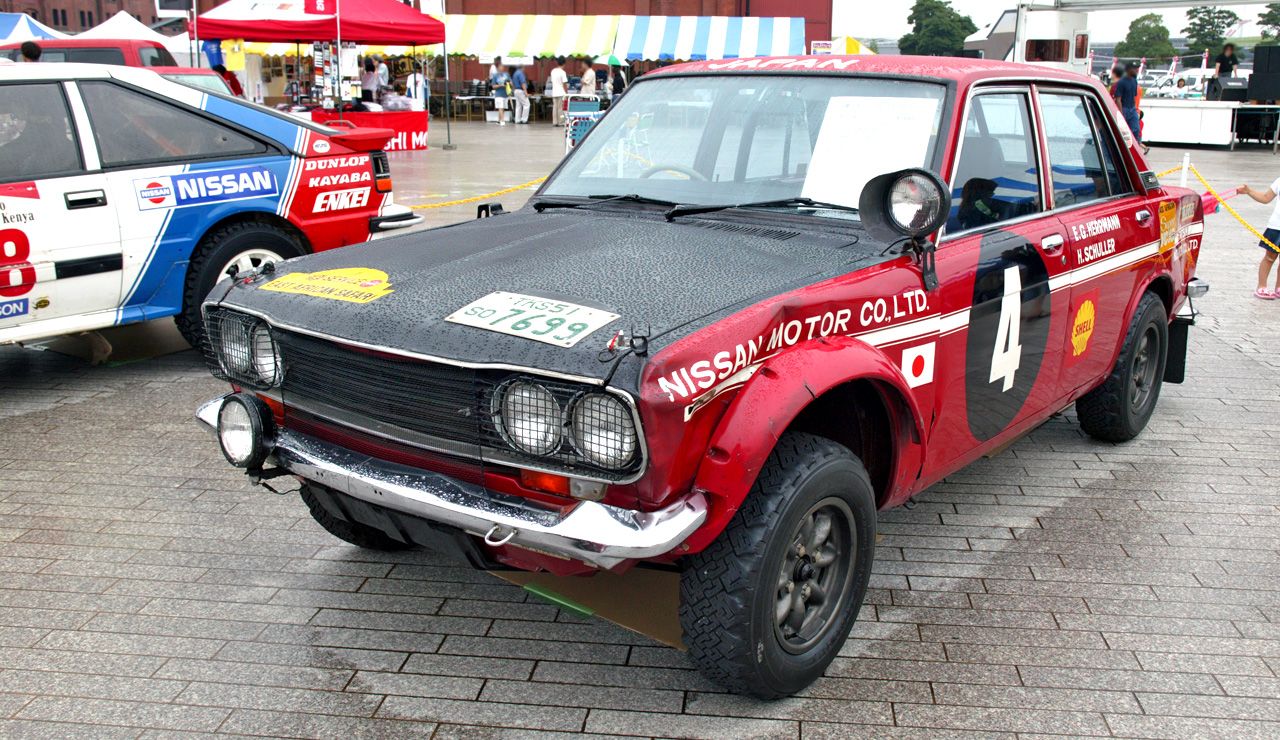
12. **Datsun 510**The Datsun 510 is a prime example of a classic car that offers a considerable amount of driving pleasure and historical significance without demanding a significant drain on your savings or an endless stream of maintenance. This nimble machine truly delivers on the promise of an accessible and enjoyable classic ownership experience.
Under the hood, the 510 typically came equipped with a 1.6L inline-four engine, producing around 96 horsepower, paired with a four-speed manual transmission. Its rear-wheel-drive layout combined with an independent rear suspension system provided a remarkably balanced and engaging feel on the road. It wasn’t about flashy power, but rather solid, responsive dynamics that drivers appreciated.
One of the most appealing aspects of the Datsun 510 is its inherent simplicity, making it straightforward to work on for those with basic mechanical skills. Furthermore, most parts are still readily available through a robust network of aftermarket suppliers, alleviating a common concern for classic car owners regarding component availability.
The interiors, while sparse, were highly functional, featuring just enough gauges and a decent steering feel. There was also ample room for owners to swap in more modern seating if desired for enhanced comfort. These cars possess a remarkable ability to wear their age gracefully and reliably, requiring minimal fuss and proving that simple engineering can lead to enduring automotive joy.
Car Model Information: 1970 Datsun 510 Base
Caption: Datsun Bluebird SSS 4-door (510)
Name: Datsun 510
Manufacturer: Nissan
Assembly: ubl
Layout: FR layout
Production: August 1967–1973
Aka: ubl
BodyStyle: Sedan (car)
Engine: ubl
Length: cvt
Width: cvt
Height: cvt
Wheelbase: cvt
Weight: cvt
Designer: Teruo Uchino
Successor: Datsun 610
Categories: 1970s cars, All articles with unsourced statements, Articles with short description, Articles with unsourced statements from July 2018, Articles with unsourced statements from June 2013
Summary: The Datsun 510 was a series of the Datsun Bluebird sold from 1968 to 1973. Outside the US it was sold as either the Datsun Bluebird or as the Datsun 1300/1400/1500/1600/1800 (depending on engine variant).
The rear-wheel drive 510’s engineering was inspired by contemporary European sedans, particularly the 1966 BMW 1600-2 – incorporating an overhead camshaft engine and four-wheel independent suspension by means of MacPherson struts in front, and semi-trailing arms on the rear wheels. The styling is attributed to Datsun in-house designer, Teruo Uchino.
Nissan USA president Yutaka Katayama pushed for offering this generation of the Bluebird with a larger overhead cam engine with more power than the preceding models. The design originated with Prince Motor Company, which merged with Nissan in 1966. The Bluebird series had been Datsun’s smaller offering, but the 1966 introduction of the 1-litre Sunny allowed Nissan to move the Bluebird up into the mid-size category.
The 510-series Bluebird was released in the domestic Japanese market on August 15, 1967. In the United States, the Datsun 510 was launched in October 1967 as a four-door sedan, followed by a two-door sedan (June 1968), five-door station wagon, and two-door coupé (November 1968). In Canada it was sold as the Datsun 1600.
The range became famous for Nissan’s rallying successes outside Japan and paved the way for greater Nissan sales internationally.
The series was available with either a four-speed manual transmission or optional three-speed automatic. 510s, in some markets, offered twin Hitachi side-draft carburetors, which were a smaller version of the British SU design used on Jaguars and MGs. These engines also used enhanced compression and camshaft profiles to produce more power. SSS models (not offered in North America) offered upgraded instrumentation and interior trim, as well as appropriate exterior badges.
Get more information about: Datsun 510
Buying a high-performing used car >>>
Brand: Datsun Model: 510
Price: $34,991 Mileage: 85,098 mi.
Read more about: Dealer’s Nightmare: The 8 Cars Nobody Will Buy Even with Massive Discounts

13. **Ford F-100 (1973–1979)**For enthusiasts drawn to rugged American utility and straightforward mechanics, old Ford pickups, particularly the F-100 from the 1973-1979 era, represent an outstanding choice. These trucks are not merely tough; they are remarkably easy to work on and surprisingly affordable to acquire, making them a cornerstone of dependable classic ownership.
Most F-100s from this period were equipped with either the bulletproof 300 cubic inch inline-six engine or the venerable 302 V8. Both powerplants are renowned for their simplicity and can typically be rebuilt with a basic set of tools, appealing directly to the DIY mechanic. Being carbureted, these engines eschew complex electronics, further simplifying maintenance and troubleshooting.
The interior of an F-100 is a testament to utilitarian design, featuring steel dashboards, durable bench seats, and basic HVAC systems. There’s nothing overly fancy to break or to chase down, which contributes significantly to their low-maintenance profile. The focus was on functionality and longevity, not fleeting luxury.
Furthermore, parts for these trucks are exceptionally cheap and widely available through a vast aftermarket and numerous suppliers. Even body panels are still being reproduced, ensuring that restoration or repair is a manageable endeavor. Whether an owner is looking to haul gear, embark on a project, or simply cruise in a fun, authentic classic, the F-100 consistently checks all the right boxes for hassle-free enjoyment.
Car Model Information: 1969 Ford F100 Base
Name: Ford F-Series
Caption: 2022 Ford F-150 Lariat Luxury
Manufacturer: Ford Motor Company
Aka: Ford Lobo (Mexico, 1992–present)
Production: 1948–present
Class: Pickup truck#Full-size pickup truck
Layout: Front-engine, rear-wheel-drive layout,rear-wheel drive
Predecessor: 1941 Ford
Categories: All-wheel-drive vehicles, All Wikipedia articles written in American English, All articles that may contain original research, All articles with unsourced statements, Articles that may contain original research from September 2020
Summary: The Ford F-Series is a series of light-duty trucks marketed and manufactured by the Ford Motor Company since model year 1948 as a range of full-sized pickup trucks — positioned between Ford’s Ranger and Super Duty pickup trucks. Alongside the F-150 (introduced in 1975), the F-Series also includes the Super Duty series (introduced in 1999), which includes the heavier-duty F-250 through F-450 pickups, F-450/F-550 chassis cabs, and F-600/F-650/F-750 Class 6–8 commercial trucks.
Get more information about: Ford F-Series
Buying a high-performing used car >>>
Brand: Ford Model: F-100
Price: $59,999 Mileage: 5,246 mi.
Read more about: Why Gen Z Isn’t Touching These 6 Legendary Boomer Rides: A Deep Dive into Generational Car Preferences
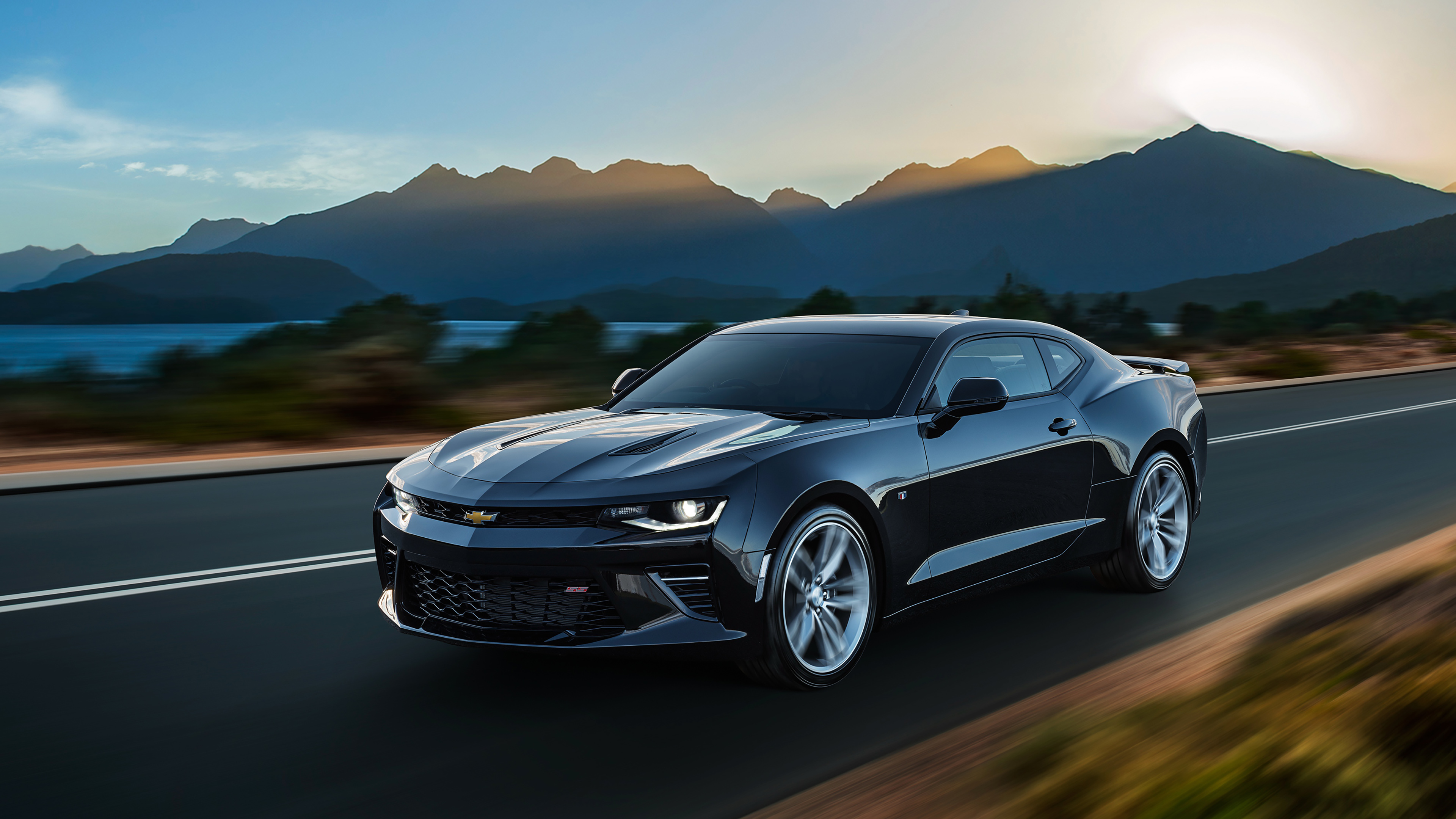
14. **Chevrolet Corvair (1963–1969)**The Chevrolet Corvair often stands as an unconventional choice in the classic car market, and this distinctiveness actually works in its favor, helping to keep acquisition prices more accessible than many of its contemporaries. It’s a classic that invites a different kind of appreciation, moving beyond traditional muscle car narratives.
What truly sets the Corvair apart is its unique rear-mounted, air-cooled flat-six engine, available in either 2.3L or 2.7L displacements depending on the production year. Critically, later models addressed early handling quirks by incorporating independent rear suspension, significantly improving its driving dynamics and reputation.
Mechanically, these cars are surprisingly accessible for those willing to engage with a slightly different engineering philosophy. Their interiors were designed with a clean and durable aesthetic, featuring thin steering wheels, tasteful metal trim, and straightforward gauges that prioritize functionality over flash. While the power output is modest, the handling is light and engaging, offering a unique driving experience.
Perhaps one of the most reassuring aspects for prospective owners is the surprisingly robust parts support available from dedicated Corvair specialists. This community and infrastructure ensure that maintaining this distinctive classic is far less daunting than one might initially imagine, solidifying its position as a truly overlooked, low-maintenance gem for the discerning enthusiast.
As our comprehensive exploration concludes, it’s clear that the landscape of classic car ownership is far richer and more diverse than often perceived. The notion that every vintage vehicle is destined to become a money pit is a myth, beautifully debunked by these fourteen exceptional machines. From iconic American muscle to ingenious European and Japanese engineering, each car on our list proves that timeless design and a deep connection to automotive history can absolutely coexist with practical, everyday enjoyment and manageable maintenance costs.
Car Model Information: 1964 Chevrolet Corvair Monza
Caption: 1964 Chevrolet Corvair Monza
Name: Chevrolet Corvair
Manufacturer: Chevrolet
Production: 1960–1969
Platform: GM Z platform
Chassis: Unibody
ModelYears: 1960–1969
Assembly: United States,Kansas City, Missouri,Oakland, California,Van Nuys,St. Louis,Flint, Michigan,Belgium,Canada,Mexico,South Africa,Switzerland,Venezuela
Class: Compact car
Successor: Chevrolet Vega
Layout: Rear-engine, rear-wheel-drive layout
Categories: All Wikipedia articles written in American English, All articles lacking in-text citations, All articles needing additional references, All articles with dead external links, All articles with specifically marked weasel-worded phrases
Summary: The Chevrolet Corvair is a rear-engined, air-cooled compact car manufactured and marketed by Chevrolet over two generations between 1960 and 1969. The Corvair was a response to the increasing popularity of small, fuel-efficient automobiles, particularly the imported Volkswagen Beetle and American-built compacts like the Rambler American and Studebaker Lark.
The first generation (1960–1964) was offered as a four-door sedan, two-door coupe, convertible, and four-door station wagon. A two- and four-door hardtop and a convertible were available second-generation (1965–1969) variants. The Corvair platform was also offered as a subseries known as the Corvair 95 (1961–1965), which consisted of a passenger van, commercial van, and pickup truck variant. Total production was approximately 1.8 million vehicles from 1960 until 1969.
The name “Corvair” was first applied in 1954 to a Corvette-based concept with a hardtop fastback-styled roof, part of the Motorama traveling exhibition. When applied to the production models, the “air” part referenced the engine’s cooling system.
A prominent aspect of the Corvair’s legacy derives from controversy surrounding the handling of early models equipped with rear swing axles, articulated aggressively by Ralph Nader’s Unsafe at Any Speed but tempered by a 1972 Texas A&M University safety commission report for the National Highway Traffic Safety Administration (NHTSA) which found that the 1960–1963 Corvair possessed no greater potential for loss of control in extreme situations than contemporary compacts.
To better counter popular inexpensive subcompact competitors, notably the Beetle and Japanese imports such as the Datsun 510, GM replaced the Corvair with the more conventional Chevrolet Vega in 1970.
Get more information about: Chevrolet Corvair
Buying a high-performing used car >>>
Brand: Chevrolet Model: Corvair
Price: $29,988 Mileage: 74,787 mi.
Read more about: Unvarnished Truth: 14 ‘Classic’ American Cars That Delivered Awful Driving Experiences
For those who have longed to feel the rumble of a classic engine or admire the lines of a bygone era without fearing the monthly repair bill, these low-maintenance heroes offer an irresistible invitation. They are not merely investments to be admired in a garage; they are tools for adventure, built for the open road and designed to be driven. So, whether you’re a seasoned collector or a first-time classic car buyer, consider one of these dependable, often-overlooked treasures. Your classic car dream is within reach, and it promises to be a remarkably smooth and fulfilling ride.


